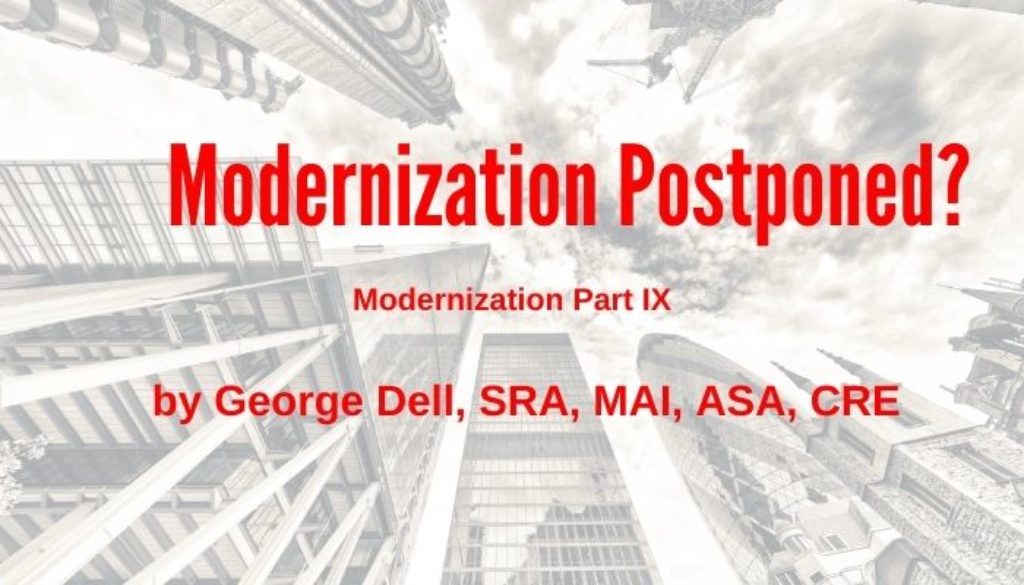Postpone appraisal modernization. We can do that later. Why?
Change and improvement should, normally, come from a profession. When a profession fails to bring improvement, eventually consumers/clients press for change. That’s what seems to have happened.
The two largest consumers of appraisals now have pressed for change. Fannie Mae and Freddie Mac have realized the restrictions of the rectangular form and the always awkward ‘adjustment’ scheme. As suggested, these enterprises would like to continue and increase their control over the valuation function, in conjunction with “modernization”.
A consequence of the larger FHFA umbrella (Federal Housing Finance Agency) is involved. In the FHFA’s sincere request for public and stakeholder input, the entire modernization project appears enlarged. This enlargement seems to be both in breadth, and in consideration of the possibility that Fannie/Freddie will no longer be government-sponsored Enterprises (GSE’s).
FHFA regulatory oversight required the GSEs to cooperate on modernization, yet compete on elements of the project. (Perhaps an impossible combination of competition and contrived cooperation.)
It is my opinion that to postpone, to delay is necessary. Why? The issues are entrenched, have inertia, and are embedded in cultural expectations (groupthink).
- The ‘philosophy’ of valuation theory has fallen decades behind the potentials of technology. This includes data, algorithms, and econometric refinements – along with visualization methods.
- Current structures effectively lock in outdated valuation practices. These structures include current standards, education, licensing, regulations, and organizational/regulatory foci.
- These structures permeate traditional appraisal, AVMs (automated valuations), and the several forms of exceptions (such as ‘hybrids,’ evaluations, broker opinions, and waivers).
- Even the currently accepted goal of valuation (market price pretending to be value) – is effectively ignored.
- Finally, the role of lending as a driver of price levels is similarly ignored. We pretend that lending follows price levels. It is quite the opposite. Effective purchasing power drives buyer ability, and motive to buy is driven by the expectation of ever higher price levels.
A true solution to this fundamental human need, shelter – will take more than ‘new forms, more standardized fields and boxes, and more detailed (perhaps trivial) pick-lists’.
In the next ‘modernization’ Analogue Blog, we will review the history of appraisal, and how we got lost in the big data.
